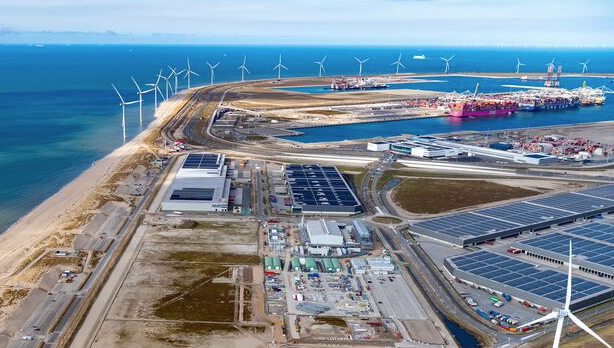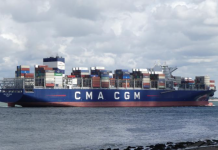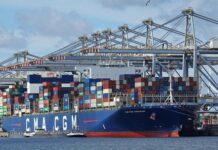
Cargo volumes through the Port of Rotterdam fell 4.1% in the first half of 2025, reaching 211.0 million tonnes. The decline was most noticeable in the dry bulk and liquid bulk segments, which dropped by 8.9% and 5.3% respectively.
While bulk cargo slowed, container throughput in TEU rose by 2.7%.
The Port Authority remains concerned about low investment levels in the wider industrial sector. Despite recent steps by the Dutch government to level the playing field with neighboring countries, port leaders say more action is needed.
The recent closure of several chemical plants, and the job losses that followed, highlight the seriousness of the situation.
Still, the port’s financial performance and investments remain stable.
Containers and Breakbulk
Container volumes hit 7.0 million TEU, up 2.7% from the same period last year. That growth reflects a rebound in European consumer demand, which led to an 8.4% rise in imports from Asia. Trade with North America climbed 9.1%, thanks to a reshuffling of alliance structures in February that brought in new services.
In terms of tonnage, container throughput fell 1.0% to 66.5 million tonnes. This drop is tied to more empty containers being shipped and a 5% decrease in full export containers—a sign of Europe’s ongoing industrial competitiveness issues.
Breakbulk throughput rose 1.3% to 16.0 million tonnes.
-
RoRo cargo rose slightly by 0.9% to 12.9 million tonnes, though volumes between Rotterdam and the UK remain weak.
-
Other general cargo grew 3.0% to 3.2 million tonnes, supported by project cargo like offshore wind foundations, steel pipes for the Porthos CO₂ storage project, and steel plates for the offshore sector.
-
Busy Container Handling
The port faced heavy congestion in the first half of the year.
The delays stemmed from a mix of issues:
-
New sailing schedules
-
Larger call sizes
-
Changing alliance structures
-
Weather disruptions
-
Work interruptions
As a result, road and inland shipping services experienced longer-than-normal wait times at the terminal gates.
At sea, the picture was better. Few large vessels waited at anchor, and berth reliability improved, with faster turnaround at the quays.
So far, Rhine water levels and U.S. import duties on European and Chinese goods have not had a clear impact on container traffic.
More than 100 ships with call sizes over 12,000 TEU visited Rotterdam in the first half of 2025, highlighting the pressure on existing infrastructure.
Port stakeholders are pushing for long-term fixes. The focus is on better collaboration, smarter use of infrastructure, and digital coordination across the supply chain. The Port Authority says it remains in ongoing dialogue with logistics partners to find lasting solutions.





